Spandex market may improve after price decreased to previous low?
Price of spandex curved a "W"-shape trend since the fourth quarter of 2022. Price of spandex 40D mainly shivered around 30500-35000yuan/mt. Spandex price was firm in Q1 2023 when the pandemic prevention and control policy has been optimized and the domestic consumption warmed up. However, spandex price started falling again from the second half of Mar after new units accelerated starting operation but the growth rate of demand failed to chase up that of supply side, and the decrement enlarged in Apr. Current spandex price has fallen to the early low near Sep 2022, mostly lower than the price near the New Year's Day of 2023.
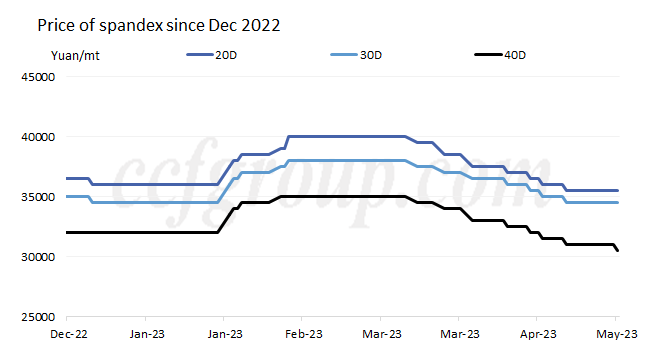
Current major feedstock cost of spandex has been the second low in recent years, close to the cost in May 2019 around 18500yuan/mt and more than 4000yuan/mt higher than the lowest in 2020. Current spandex price is only 2700yuan/mt higher than the lowest in 2020. With high energy and packaging price, spandex industry confronts apparently bigger operation pressure.
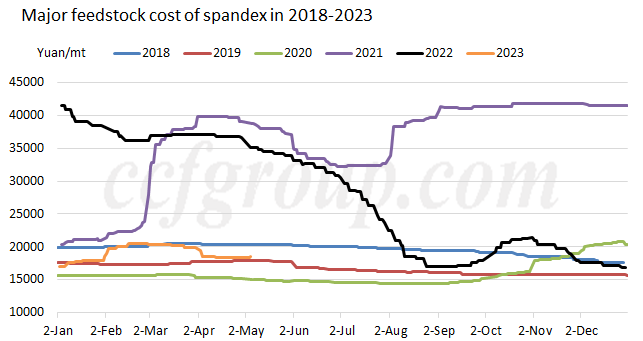
Increasing spandex plants cut or suspended production pressed by cost and demand. Current operating rate of spandex plants has hit new low during the same period of recent 6 years. Supply of spandex increases and the production of spandex remained high in end-Q1 and early-Q2. The capacity of spandex was stabilized at 1241.5kt/year in early-May in Chinese mainland. The operating rate of large spandex plants with above 80kt/year of capacity was at 79%, that of medium companies with 30-50kt/year of capacity was at 78% and that of enterprises with capacity below 20kt/year was above 20%. As for different regions, the operating rate of spandex plants in East China was lower than that in Midwest China, around 83% in Midwest China and above 72% in East China.
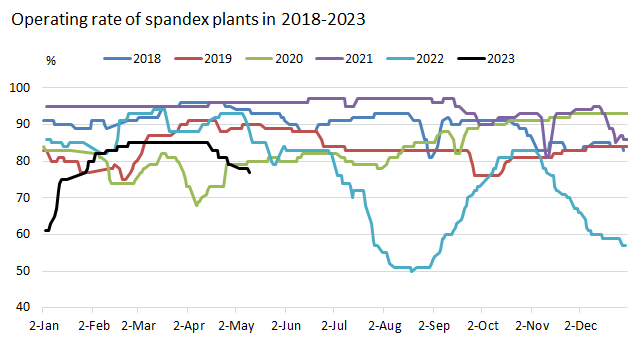
Operating rate of spandex downstream fabric mills was diversified, which was medium compared with previous years: the run rate of covered yarn plants, warp knitting mills in Guangdong and circular knitting plants in Chaozhou and Shantou was stable, mainly around 60-70% or above, that of circular knitting plants was above 40% in Zhejiang and Jiangsu, and that of circular knitting plants in Foshan, Guangdong, lace knitting mills in Changle and warp knitting plants in Haining was mainly at 30-40% or above. Increasing fabric manufacturing machine resulted into fiercer competition on downstream sector. Some distributers and fabric mills increased restocking when price was low while most buyers purchased spandex on a need-to-basis when supply of spandex is in glut.
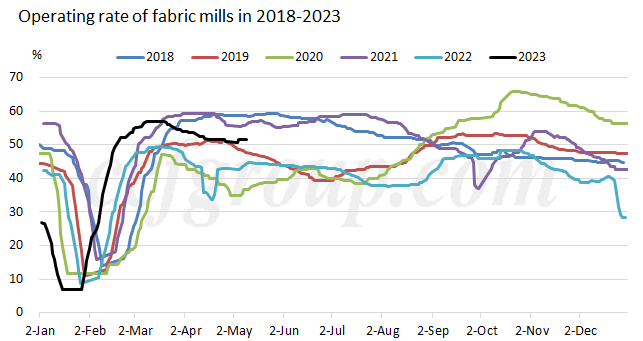
Remark: above run rate is the average run rate of conventional covered yarn plants in Zhejiang, circular knitting plants in Guangdong, Zhejiang and Jiangsu, warp knitting plants in Guangdong, lace mills in Fujian and core-spun yarn plants in Zhangjiagang.
In 2023, domestic sales and export of textiles and apparels are diversified. Domestic sales apparently recover while export faces pressure, still enjoying strong resilience. From Jan to Mar 2023, retail sales of consumer goods in China totaled 11.49224 trillion yuan, an increase of 5.8% over the same period of last year, according to the Bureau of Statistics. From Jan to Mar 2023, the retail value of clothing, shoes, hats, knitwear and textiles was 370.27 billion yuan in China, an increase of 9% year on year. From Jan to Apr 2023, textile and clothing exports totaled US$92.88 billion, down 2.9%, but still at the second highest level in Jan-Apr over the years, of which textile exports were US$44.81 billion, down 8%, and clothing exports were US$48.08 billion, an increase of 2.5%. Export volume and price shrank to Europe and US amid high inflation. Players in Europe and US focused on digesting the previous inventory of textiles and apparels. However, RCEP, Belt and Road Initiative, Russia, Australia and other flows of textile clothing demand is still relatively strong.
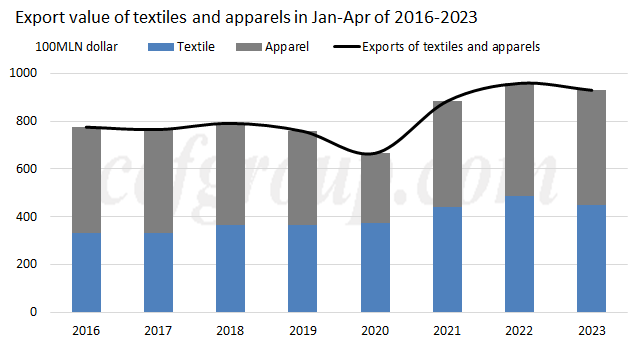
With stronger feedstock price, the cash flow of spandex plants has been shrunk apparently and some factories face apparent losses. Increasing spandex plants cut or suspend production pressed down cost and demand. The price of spandex 40D has reduced to near the earlier low. The price risk has been released in short run and spandex price is expected to shiver in the second half of May. The price is likely to be lower for stagnated resources and spandex from new units. The overseas macro environment change and the capacity expansion of BDO-PTMEG-Spandex industrial chain should be concerned in medium run.
- Top keywords
- Cotton Price
- Cotton Futures Price
- Cotton Futures
- CZCE
- PTA Futures Price
- Chemical Fiber
- Polyester Prices
- Wool price
- PTA Futures
- Shengze Silk
- China
- Yarn Price
- price
- China Textile City
- Fibre Price
- Benzene Price
- Cotton
- Index
- Cotton Index
- PTA
- fabric price
- NYMEX
- Top 10
- textile industry
- Spot Cotton
- Cotton Yarn
- Polyester Price
- Futures
- PTA Price
- cotton yarn price

